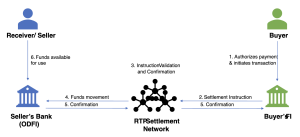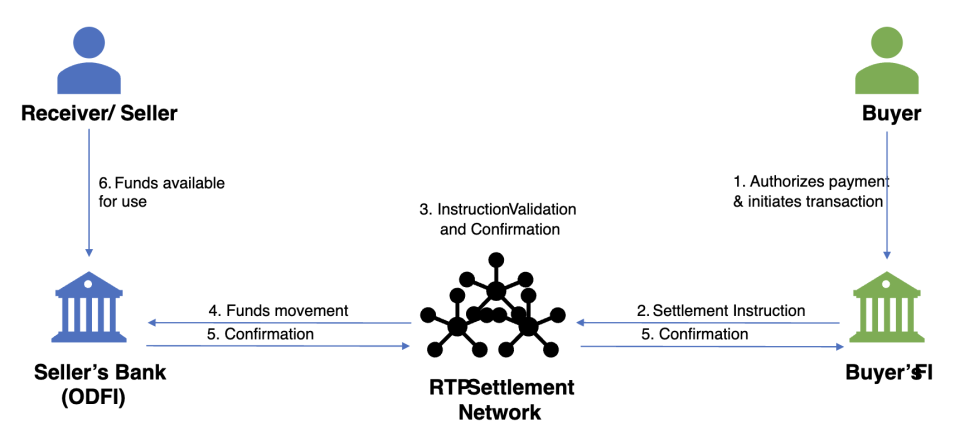Real-time payment Systems (RTP) have emerged as a transformative force in the global financial ecosystem, redefining customer experiences and setting new standards for speed, convenience, and accessibility. As businesses and consumers increasingly demand instant and seamless transactions, RTP systems are becoming indispensable in the modern financial landscape.
In this in-depth exploration, we’ll analyze how real-time payment systems are evolving, their impact on customer experience, and the opportunities they present for financial institutions and businesses to enhance their service offerings.
What Are Real-Time Payment Systems?
Traditionally, the process of transferring money involved cumbersome delays due to banking hours, intermediaries, and outdated processes. Real-time payment systems revolutionize this by enabling immediate fund transfers 24/7, providing recipients with instant access to funds.
This immediacy is a game-changer for customer experience, as it eliminates the anxiety and inefficiencies associated with delayed transactions. By 2028, RTP is expected to account for over 25% of all electronic payments globally, signaling its rising prominence.
For businesses, RTP systems enable faster cash flow management and real-time reconciliation, streamlining operations and fostering stronger customer relationships.
How Real-Time Payment Systems Work
RTP systems function through an advanced network overseen by central banks or authorized financial bodies. Here’s a typical process:
- Transaction Initiation: A customer initiates a payment via a mobile banking app, payment portal, or other digital interface.
- Authentication: Secure authorization using a PIN, biometric verification, or password.
- Instant Routing: The payment is processed through the RTP network, ensuring immediate clearance and settlement.
- Fund Accessibility: The recipient gains access to the transferred funds within seconds.
This efficiency forms the backbone of RTP systems globally, fostering trust and reliability in financial transactions.
RTP Systems: Enhancing CX Across the Globe
FedNow (USA)
FedNow, launched in 2023, is transforming the American payment landscape by providing a reliable infrastructure for instant payments. Here’s how FedNow enhances customer experiences:
Round-the-Clock Access: Transactions can occur any time, breaking free from the constraints of traditional banking hours.
Inclusive Ecosystem: FedNow is designed for financial institutions of all sizes, democratizing access and fostering innovation.
Enhanced Security: FedNow incorporates advanced cybersecurity measures, ensuring safe and trustworthy transactions.
FedNow’s 25% projected CAGR underscores the significant role it will play in North America’s RTP growth.
Unified Payments Interface (UPI) – India
Since its launch in 2016, UPI has become a cornerstone of India’s digital economy. The platform recorded over 130 billion transactions in 2023, representing 84% of India’s electronic payments. Key features contributing to its success include:
Integration Across Banks: Customers can link multiple bank accounts to a single app for seamless fund transfers.
Interoperability: UPI’s compatibility across payment platforms enhances flexibility for customers and businesses alike.
Accessibility: UPI’s intuitive design ensures even small vendors and rural users can participate in the digital economy.
For customers, UPI delivers unparalleled convenience and accessibility, fostering financial inclusion across diverse demographics.
PIX (Brazil)
Introduced by the Central Bank of Brazil in 2020, PIX has quickly become a favored payment method due to its low cost and versatility. It supports diverse use cases, including B2B payments, government disbursements, and e-commerce transactions.
Customer experience benefits of PIX include:
Instant Gratification: Whether paying bills or shopping online, customers enjoy immediate processing.
Low-Cost Transactions: PIX minimizes transaction fees, making it appealing for both businesses and individual users.
Financial Inclusion: By integrating with over 90% of bank account holders in Brazil, PIX empowers underserved communities.
The system’s 78% YoY growth rate in 2023 reflects its profound impact on Brazil’s financial ecosystem.
Customer Experience: The Heart of RTP Systems
RTP systems enhance customer experience in several ways:
- Speed: Instantaneous payments reduce wait times, fostering trust and satisfaction.
- Transparency: RTP systems often include real-time notifications, keeping users informed at every stage.
- Convenience: With 24/7 availability, customers are no longer bound by banking hours.
- Flexibility: RTP systems support diverse transaction types, from peer-to-peer transfers to B2B payments.
- Security: Advanced encryption and fraud detection mechanisms ensure user data is protected.
These advantages make RTP systems essential for businesses looking to deliver superior customer experiences.
Global Outlook and Emerging Markets
Countries such as Singapore, Australia, and Sweden are also adopting RTP systems to enhance their financial frameworks. For example:
Singapore’s FAST (Fast and Secure Transfers) enables immediate fund transfers across banks.
Australia’s NPP (New Payments Platform) facilitates instant payments and supports overlay services like PayID.
Sweden’s Swish integrates real-time payments with QR codes, enhancing mobile commerce.
As RTP systems expand globally, they promise to unlock new opportunities for financial inclusion and digital transformation.
Future Challenges and Opportunities
While RTP systems bring immense benefits, they also present challenges:
Cybersecurity Risks: The speed of RTP makes them a potential target for fraud and cyberattacks. Robust security measures are critical.
Interoperability Issues: Ensuring seamless integration across platforms and borders remains a work in progress.
Adoption Barriers: Financial literacy and access to technology can hinder adoption in underserved regions.
Despite these hurdles, RTP systems represent a massive opportunity for financial institutions, fintechs, and businesses to innovate and enhance customer experiences.

Conclusion
Real-time payment systems are revolutionizing the way money moves, delivering unparalleled speed, efficiency, and customer satisfaction. From FedNow to UPI and PIX, RTP systems are reshaping financial ecosystems worldwide, fostering inclusivity and streamlining processes.
As businesses and financial institutions adapt to this paradigm shift, embracing RTP is no longer optional—it’s essential for staying competitive in a rapidly evolving digital landscape.
By prioritizing customer experience and addressing emerging challenges, the future of real-time payments is bright, promising a more connected and efficient financial world.

